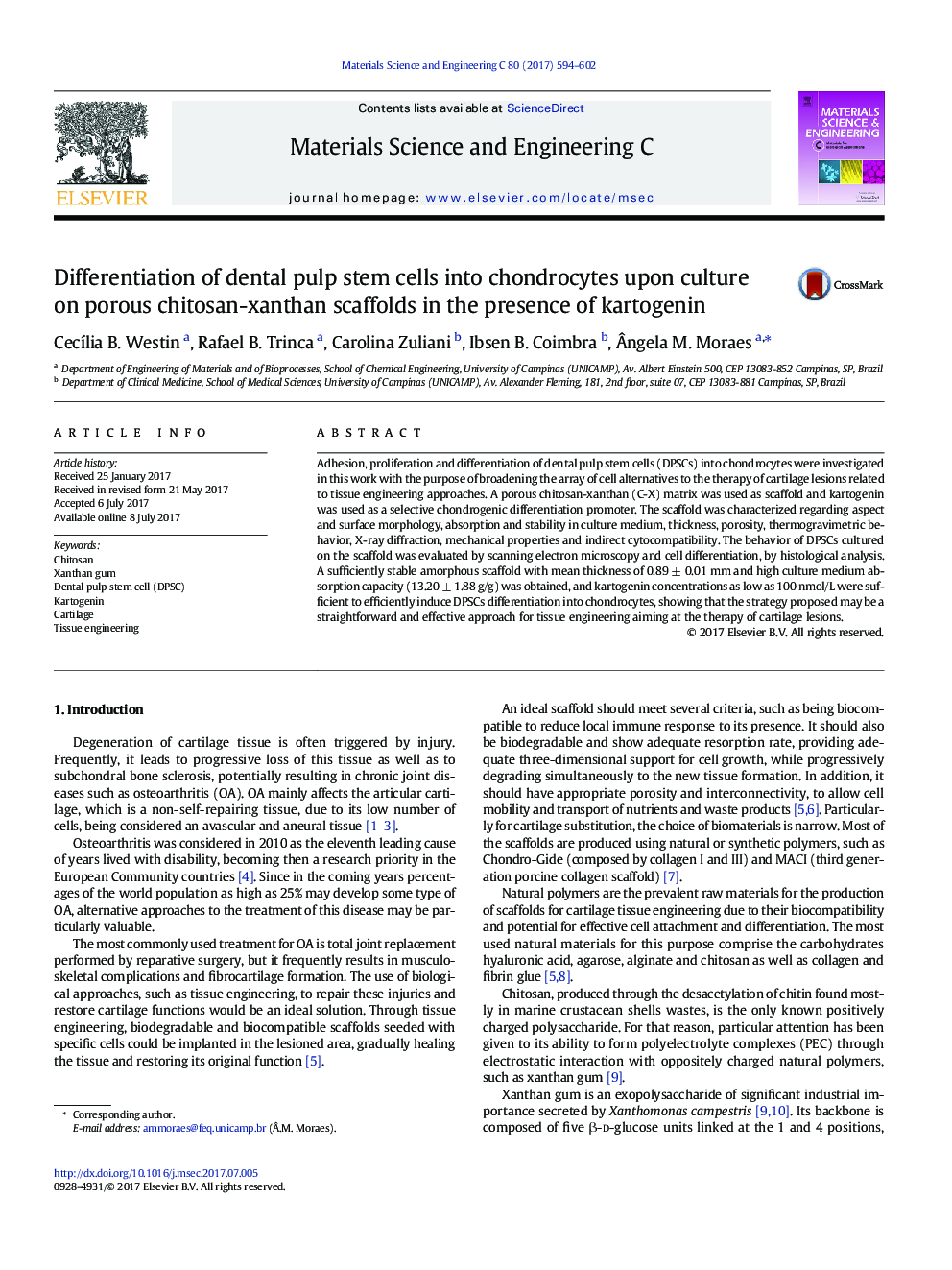| Article ID | Journal | Published Year | Pages | File Type |
|---|---|---|---|---|
| 5434356 | Materials Science and Engineering: C | 2017 | 9 Pages |
â¢A porous chitosan-xanthan scaffold for cartilage tissue engineering was prepared.â¢The scaffold was stable, amorphous and showed high culture medium absorption.â¢The scaffold was not cytotoxic to dental pulp stem cells (DPSC).â¢In scaffolds containing kartogenin, DPSCs differentiated into chondrocytes.â¢The strategy suggested could be an effective method for cartilage repair.
Adhesion, proliferation and differentiation of dental pulp stem cells (DPSCs) into chondrocytes were investigated in this work with the purpose of broadening the array of cell alternatives to the therapy of cartilage lesions related to tissue engineering approaches. A porous chitosan-xanthan (C-X) matrix was used as scaffold and kartogenin was used as a selective chondrogenic differentiation promoter. The scaffold was characterized regarding aspect and surface morphology, absorption and stability in culture medium, thickness, porosity, thermogravimetric behavior, X-ray diffraction, mechanical properties and indirect cytocompatibility. The behavior of DPSCs cultured on the scaffold was evaluated by scanning electron microscopy and cell differentiation, by histological analysis. A sufficiently stable amorphous scaffold with mean thickness of 0.89 ± 0.01 mm and high culture medium absorption capacity (13.20 ± 1.88 g/g) was obtained, and kartogenin concentrations as low as 100 nmol/L were sufficient to efficiently induce DPSCs differentiation into chondrocytes, showing that the strategy proposed may be a straightforward and effective approach for tissue engineering aiming at the therapy of cartilage lesions.
Graphical abstractDownload high-res image (136KB)Download full-size image
